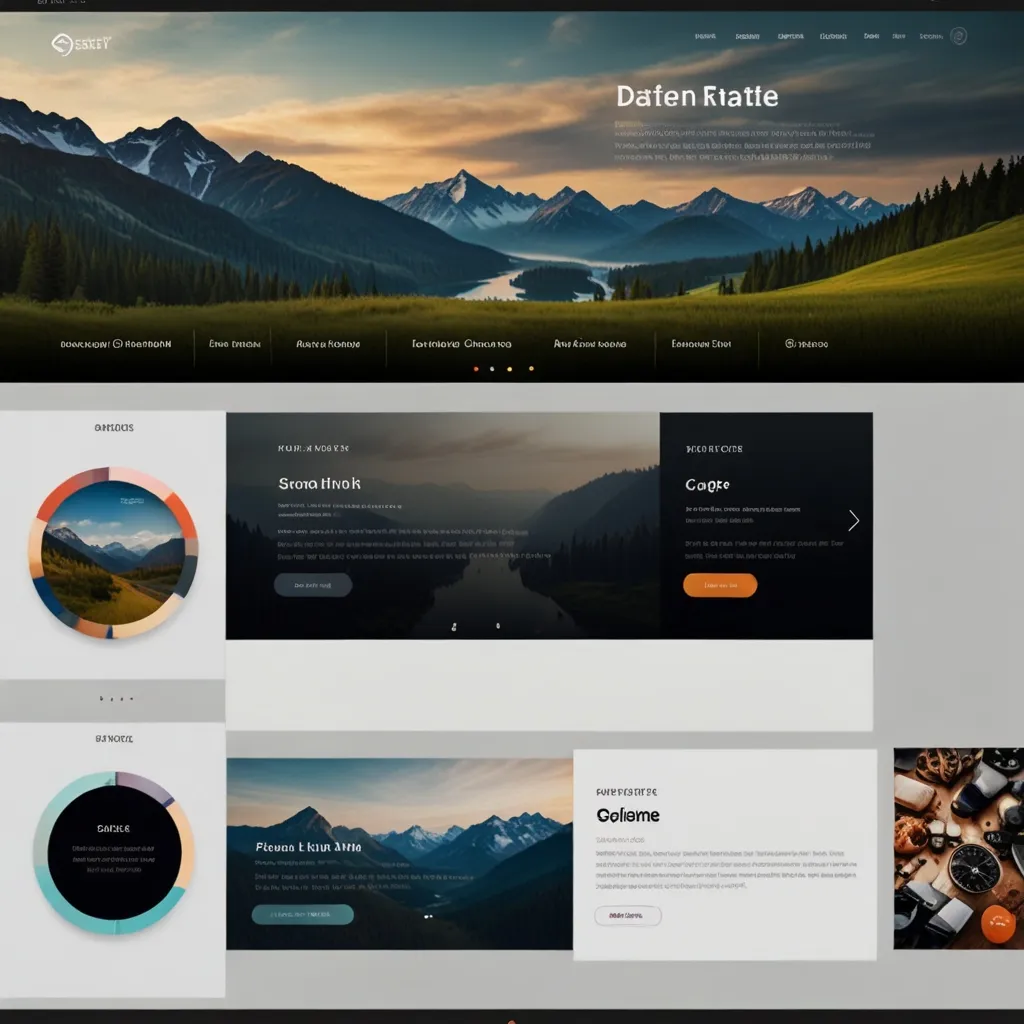React’s Error Boundaries are like safety nets for your UI components. They catch errors that occur during rendering, in lifecycle methods, and in constructors of the whole tree below them. It’s a game-changer for handling exceptions gracefully without breaking your entire app.
To use Error Boundaries, you create a class component that implements either getDerivedStateFromError() or componentDidCatch() (or both). When an error occurs in a child component, React will call these methods, allowing you to handle the error and display a fallback UI.
Here’s a simple Error Boundary component:
class ErrorBoundary extends React.Component {
constructor(props) {
super(props);
this.state = { hasError: false };
}
static getDerivedStateFromError(error) {
return { hasError: true };
}
componentDidCatch(error, errorInfo) {
console.log(error, errorInfo);
}
render() {
if (this.state.hasError) {
return <h1>Oops! Something went wrong.</h1>;
}
return this.props.children;
}
}
Now, you can wrap any part of your app with this ErrorBoundary component:
<ErrorBoundary>
<MyComponent />
</ErrorBoundary>
If MyComponent (or any of its children) throws an error, the ErrorBoundary will catch it and display the fallback UI.
But here’s the thing: Error Boundaries are not just about catching errors. They’re about improving user experience and maintaining the stability of your app. Imagine you’re building a complex dashboard with multiple widgets. If one widget fails, you don’t want the entire dashboard to crash. Error Boundaries let you isolate failures and keep the rest of your app running smoothly.
I remember working on a project where we had a particularly troublesome third-party component. It would occasionally throw errors that were hard to reproduce and fix. We wrapped it in an Error Boundary, and suddenly, our app became much more stable. Instead of crashing, it would gracefully degrade, showing a “Widget unavailable” message when the component failed.
Error Boundaries are also great for logging. In the componentDidCatch method, you can send error information to your logging service. This helps you track and fix issues in production without disrupting the user experience.
One cool trick I’ve used is to combine Error Boundaries with React Suspense. Suspense lets you “wait” for some code to load and declaratively specify a loading state. By wrapping your Suspense component with an Error Boundary, you can handle both loading states and errors in a clean, declarative way:
<ErrorBoundary>
<Suspense fallback={<Loading />}>
<MyComponent />
</Suspense>
</ErrorBoundary>
Now, if MyComponent fails to load or throws an error while rendering, your Error Boundary will catch it.
But Error Boundaries aren’t a silver bullet. They don’t catch errors in event handlers, asynchronous code (like setTimeout or requestAnimationFrame), or in the Error Boundary itself. For these cases, you’ll need to use try-catch or handle errors in the Promise chain.
Also, Error Boundaries only work in class components. But don’t worry if you’re a fan of functional components and hooks. You can create a hook that uses an Error Boundary internally:
function useErrorBoundary() {
const [hasError, setHasError] = useState(false);
if (hasError) {
return <h1>Oops! Something went wrong.</h1>;
}
return [
(error) => setHasError(true),
() => setHasError(false),
];
}
Then use it in your functional components:
function MyComponent() {
const [handleError, reset] = useErrorBoundary();
useEffect(() => {
fetchData().catch(handleError);
return reset;
}, []);
// ... rest of your component
}
One thing I’ve learned from using Error Boundaries is that they’re not just about handling errors—they’re about designing for failure. When you start thinking about how your components might fail, you start writing more robust code.
For example, you might realize that certain props should have default values, or that you need to handle null states more gracefully. You might start breaking your large components into smaller, more manageable pieces that are less likely to fail catastrophically.
Error Boundaries also encourage you to think about the user experience when things go wrong. Instead of showing a blank screen or a cryptic error message, you can design informative, even delightful error states. I once worked on an e-commerce site where we used Error Boundaries to show personalized recommendations when a product page failed to load. It turned a potential frustration into a new opportunity for engagement.
But with great power comes great responsibility. It’s tempting to wrap your entire app in an Error Boundary and call it a day. Resist this urge! The goal isn’t to hide errors, but to handle them gracefully. Use Error Boundaries strategically, at the component level where it makes sense.
Also, don’t forget about accessibility when designing your error states. Screen readers should be able to understand and communicate what went wrong. Use appropriate ARIA attributes and semantic HTML in your fallback UIs.
Error Boundaries can also be a great tool for debugging. By implementing different Error Boundaries at different levels of your component tree, you can pinpoint where errors are occurring. You can even create a development-only Error Boundary that displays detailed error information:
class DevErrorBoundary extends React.Component {
constructor(props) {
super(props);
this.state = { hasError: false, error: null, errorInfo: null };
}
static getDerivedStateFromError(error) {
return { hasError: true };
}
componentDidCatch(error, errorInfo) {
this.setState({ error, errorInfo });
}
render() {
if (this.state.hasError) {
return (
<div>
<h1>Oops! Something went wrong.</h1>
<details style={{ whiteSpace: 'pre-wrap' }}>
{this.state.error && this.state.error.toString()}
<br />
{this.state.errorInfo.componentStack}
</details>
</div>
);
}
return this.props.children;
}
}
Use this in development, but make sure to replace it with a production-friendly version before deploying.
One pattern I’ve found useful is to combine Error Boundaries with a retry mechanism. Here’s a simple implementation:
class RetryErrorBoundary extends React.Component {
constructor(props) {
super(props);
this.state = { hasError: false };
}
static getDerivedStateFromError(error) {
return { hasError: true };
}
componentDidCatch(error, errorInfo) {
console.log(error, errorInfo);
}
render() {
if (this.state.hasError) {
return (
<div>
<h1>Oops! Something went wrong.</h1>
<button onClick={() => this.setState({ hasError: false })}>
Retry
</button>
</div>
);
}
return this.props.children;
}
}
This gives users the option to retry the failed operation, which can be particularly useful for transient errors or network issues.
Error Boundaries can also be a great place to implement analytics. By tracking errors at this level, you can get insights into which parts of your app are causing the most problems for users. This can help prioritize bug fixes and improvements.
componentDidCatch(error, errorInfo) {
console.log(error, errorInfo);
analytics.trackEvent('Error', {
error: error.toString(),
componentStack: errorInfo.componentStack
});
}
Just be careful not to include any sensitive information in your error tracking!
As your app grows, you might find yourself creating multiple Error Boundaries for different purposes. You could have one for network errors, another for rendering errors, and so on. This granular approach allows you to handle different types of errors in the most appropriate way.
Error Boundaries are a powerful tool, but they’re not a replacement for good error prevention practices. Always validate your props, handle edge cases, and write thorough tests. Error Boundaries should be your last line of defense, not your first.
Remember, the goal of Error Boundaries is to improve the user experience. They’re not just about preventing your app from crashing—they’re about providing a smooth, frustration-free experience even when things go wrong. Used wisely, they can turn potential points of user frustration into opportunities for engagement and delight.
In the end, Error Boundaries are just one tool in your React toolbox. They work best when combined with other React features and good programming practices. So experiment, iterate, and find the patterns that work best for your app and your users. Happy coding!






